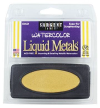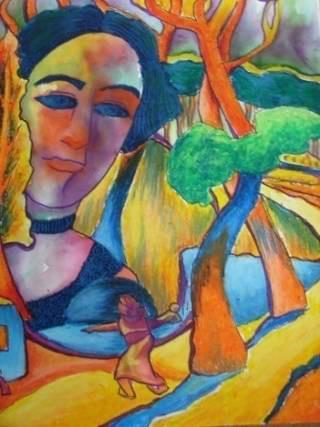Goal:
Students will create an abstract work of art by combining various shapes, patterns, and textures from several different works of art to create a pleasing composition. This work will be inspired by Fauve artists.
Objective:
Students will create an abstract work of art by combining various shapes, patterns, and textures from works of the Fauve artists Andre Derain, Henri Matisse, and Alexi Jawlensky. The Elements of Art – Line, Shape, Color, Value, Value, Space, and Texture, as well as the Principles of Art – Emphasis, Balance, Movement, Unity, Repetition, and Pattern should be included in this work.
National Standards:
Visual Arts Grades K-4 Content Standard 1: Understanding and applying media, techniques, and processes
Visual Arts Grades K-4 Content Standard 3: Choosing and evaluating a range of subject matter, symbols, and ideas
Visual Arts Grades K-4 Content Standard 4: Understanding the visual arts in relation to history and cultures
Visual Arts Grades K-4 Content Standard 6: Making connections between visual arts and other disciplines
Purpose:
Students will be able to create their own compositions by taking shapes, patterns, and textures from famous works of art and combining those elements into a pleasing design.
Students will also learn background information about the Fauves, how they used color, how to use oil pastels, sgraffito, and the wet on wet technique with watercolor.
New Vocabulary:
Fauves, complementary colors, warm colors, cool colors, Emphasis, Movement, Unity, Pattern, sgraffito
Materials:

#22-8426 Sargent Semi-Moist Oval Watercolor set

#22-2016 Sargent Art Large Oil Pastels

#22-1506 Sargent Art 6 ct. Liquid Metals Metallic Markers

#66-8081 Sargent Art Metallic Gold Watercolor Liquid Metals

#22-9813 10 Well Round Palette Tray

#22-1491 SuperFine Line Markers
white sulphite paper, ultrafine black permanent markers Sargent Art
Time:
5-6 class periods
Introduction and Motivation (Set):
Introduce the students to the Fauve artists (Matisse, Derain, Vlaminck, and Jawlensky) whose work was characterized by bold distortion of form and the use of strong pure color.
Show examples of the Fauves work and discuss how they used color, movement, pattern, repetition, and emphasis in their works.
Explain to students that they will be choosing different elements from the works displayed and they will be creating their own works of art from these works. Explain that to copy a work exactly is plagiarism, but to take parts from many works and to combine them to create your own work is acceptable.
Show an example of a completed work.
Instruction:


abstract work following directions given by the teacher
Discuss complementary, warm and cool colors, and their use by the Fauves. Demonstrate how to use oil pastels. Show how to blend the colors, how to create lighter and darker values with the oil pastels. Also demonstrate how to create texture and pattern in the oil pastels by using a wooden skewer or sgraffitto tool.


Demonstrate how to do the wet on wet technique with watercolor. Show students how colors will bleed into each other creating new colors and how they will blend into each other.

The wet on wet technique has been used in the background behind the trees as well as on the face of the large woman and the smaller figures in the foreground.
Demonstrate how the Watercolor Liquid Metals can be used to highlight various objects in the painting to make them appear to be more 3 dimensional or to make those objects stand out more.

Add gold Sargent Liquid Metals Watercolor to the painting to create highlights and Emphasis to the painting.
Students will then critique their work — giving it a title, identifying the Emphasis, and discussing how their work of art resembles that of the Fauves. As a Language Arts assignment, they will write a story using their work of art as a writing prompt.
Activities:
(1) Guided Practice:
- Using Fauve print #1, have students draw an object from the work of art that interests them. The object must be off center and should include some secondary shapes within the object.
- Using Fauve print #2, students should select a pattern and draw that repeated pattern in an area behind their contour line drawing.
- Have students draw a large circle somewhere in their composition.
- Using Fauve print #3, select another object to place in the design. Be sure that it works with the Emphasis and adds leading lines.
- From one of the previous prints, or from print #4, select a portion of another object and add it to the composition. Keep in mind the Principles – Balance, Variety, and Unity.
- Add a rectangle.
- Add more pattern and repeat that pattern in three different locations in the composition.
- Transfer to a clean paper if necessary and go over lines with an ultrafine black permanent marker.
- Watch oil pastel demonstration.
- Demonstrate how to do sgraffito in the color that has been applied with oil pastels.
- Decide what color combinations will be used – mostly warm, mostly cool, or complementary colors.
- Decide which areas will have watercolor and which will have oil pastel. Discuss this with the class sharing how each will work in the composition.
- Add oil pastel to the appropriate places in the work of art.
- Add sgraffito to an appropriate area in the design.
- Demonstrate how to do wet on wet watercolor. Make sure that the students realize that the oil pastel will act as a barrier to keep the watercolor from running or bleeding into another shape.
- Have students add watercolor to the remaining parts of their composition, being careful to keep their colors from becoming “muddy” when dropping several colors onto the wet paper.
- Allow the works to dry.
- Have students use Sargent’s Metallic Markers to add lines, shadows, or textures to enhance the work of art. This will help create a sense of Unity. The student should stick with one color of Metallic Marker to enhance the work.
- Have students choose one of the Sargent Watercolor Liquid Metals to add highlights to one or more objects in the work. This can also help to accentuate the Emphasis.
(2) Independent Practice and Check for Understanding: The teacher will circulate among the students as they work to make sure that they understand the concepts of creating a composition from several works of art; they understand how to create an Emphasis in their composition; they understand how to use oil pastels and watercolors and how to create Unity in their work of art. The teacher will ask direct questions when understanding is not observed and will redirect students in a kind and reassuring manner. Students will be encouraged and directed using positive reinforcement.
(3) Closure: Students will be asked to critique their work of art. They will give their work of art a title. They will be asked to identify the Emphasis in their work and to discuss how their work resembles the artwork of the Fauves.
They will also be asked to use their work of art as a writing prompt and will write a story about what is going on in their work of art. They should include main idea, main characters, where the story is set, and what is happening in the picture. Appropriate punctuation, spelling, and paragraph structure should be included in the written assignment.
Evaluation:
Level One – The finished work will be a collection of objects, shapes, and patterns taken from the Fauve prints shared with the class. There will be a definite Emphasis that is not in the center of the page. The student will have chosen a color scheme that is primarily warm, cool, or complementary. Oil Pastels and watercolors will have been blended well with no muddy colors. Craftsmanship and design should be excellent.
Level Two – The finished work will be a collection of objects, shapes, and patterns taken from the Fauve prints that were shared with the class. There will be an Emphasis that is not in the center of the page. The student will have chosen a color scheme that is primarily warm, cool, or complementary. Oil Pastels and watercolors will have been blended so that there are little, if any, muddy colors.
Craftsmanship and design should be good.
Level Three – The finished work will contain most of the objects and patterns required in the instructions. The Emphasis may or may not be in the middle of the page. Blending and craftsmanship will be poor as may be the design. Colors may possibly be muddy and a warm, cool, or complementary color scheme may or may not be followed.
Level Four – The finished work does not resemble that of the Fauves. There is no recognizable Emphasis. The colors are muddy. Unity is absent from the design. No recognizable color scheme has been used. Craftsmanship and design are poor.
Extensions:
Students can use the same directions for the line drawing to create a drawing from different paintings, still lifes, or objects in the classroom or at home. They can add value and texture with a pencil. This can be used as a final drawing or can be used as the design for a painting.
Resources:
http://www.artyfactory.com/art_appreciation/art_movements/fauvism.htm
http://www.writedesignonline.com/history-culture/derain
http://wahooart.com/A55A04/w.nsf/opra/BRUE-5ZKCRH
http://en.wilipedia.org/wiki/Les_Fauves
http://en.wilipedia.org/wiki/Andr%C3%A9_Derain
Art Consultant



